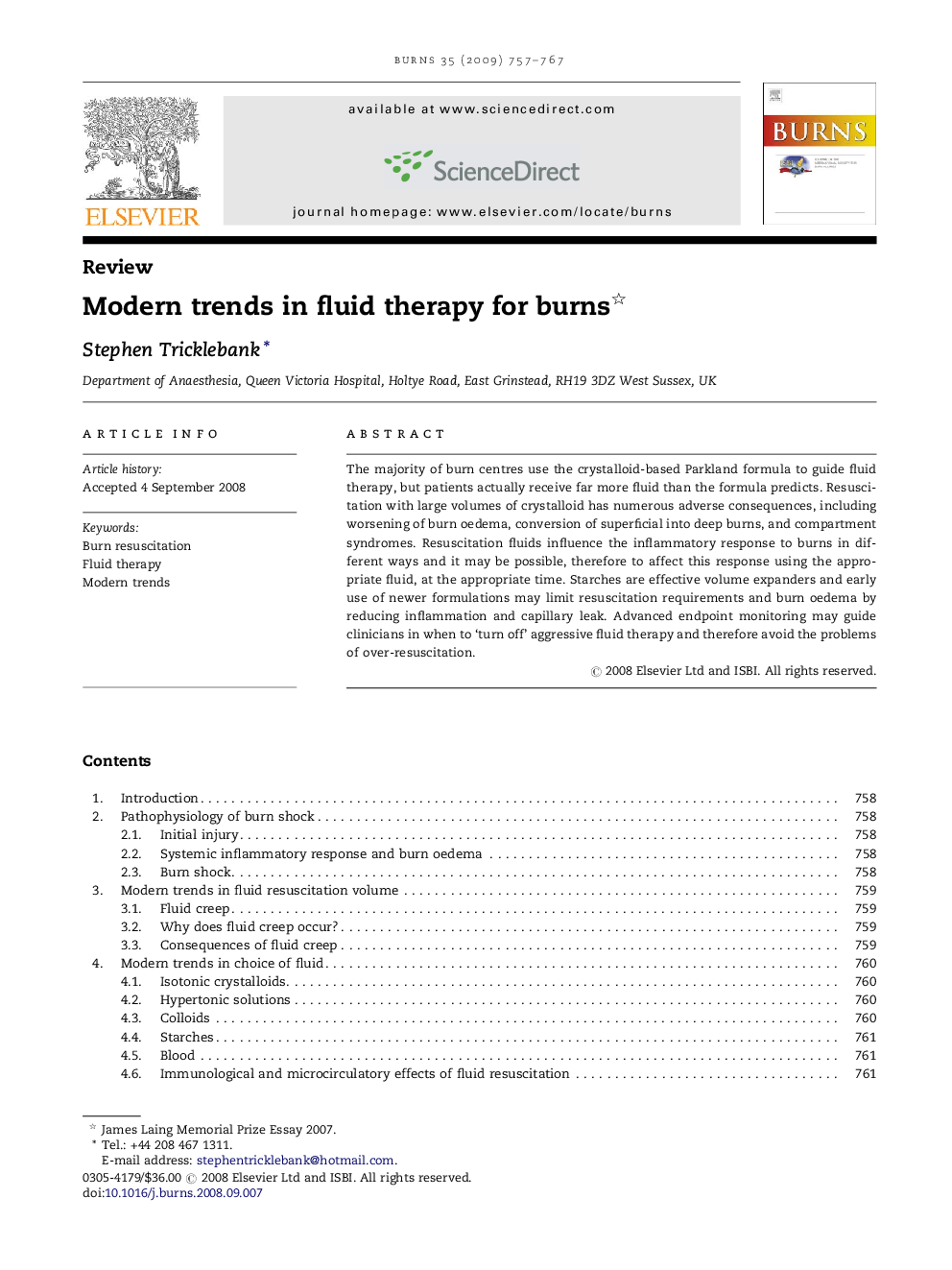| Article ID | Journal | Published Year | Pages | File Type |
|---|---|---|---|---|
| 3105212 | Burns | 2009 | 11 Pages |
The majority of burn centres use the crystalloid-based Parkland formula to guide fluid therapy, but patients actually receive far more fluid than the formula predicts. Resuscitation with large volumes of crystalloid has numerous adverse consequences, including worsening of burn oedema, conversion of superficial into deep burns, and compartment syndromes. Resuscitation fluids influence the inflammatory response to burns in different ways and it may be possible, therefore to affect this response using the appropriate fluid, at the appropriate time. Starches are effective volume expanders and early use of newer formulations may limit resuscitation requirements and burn oedema by reducing inflammation and capillary leak. Advanced endpoint monitoring may guide clinicians in when to ‘turn off’ aggressive fluid therapy and therefore avoid the problems of over-resuscitation.
